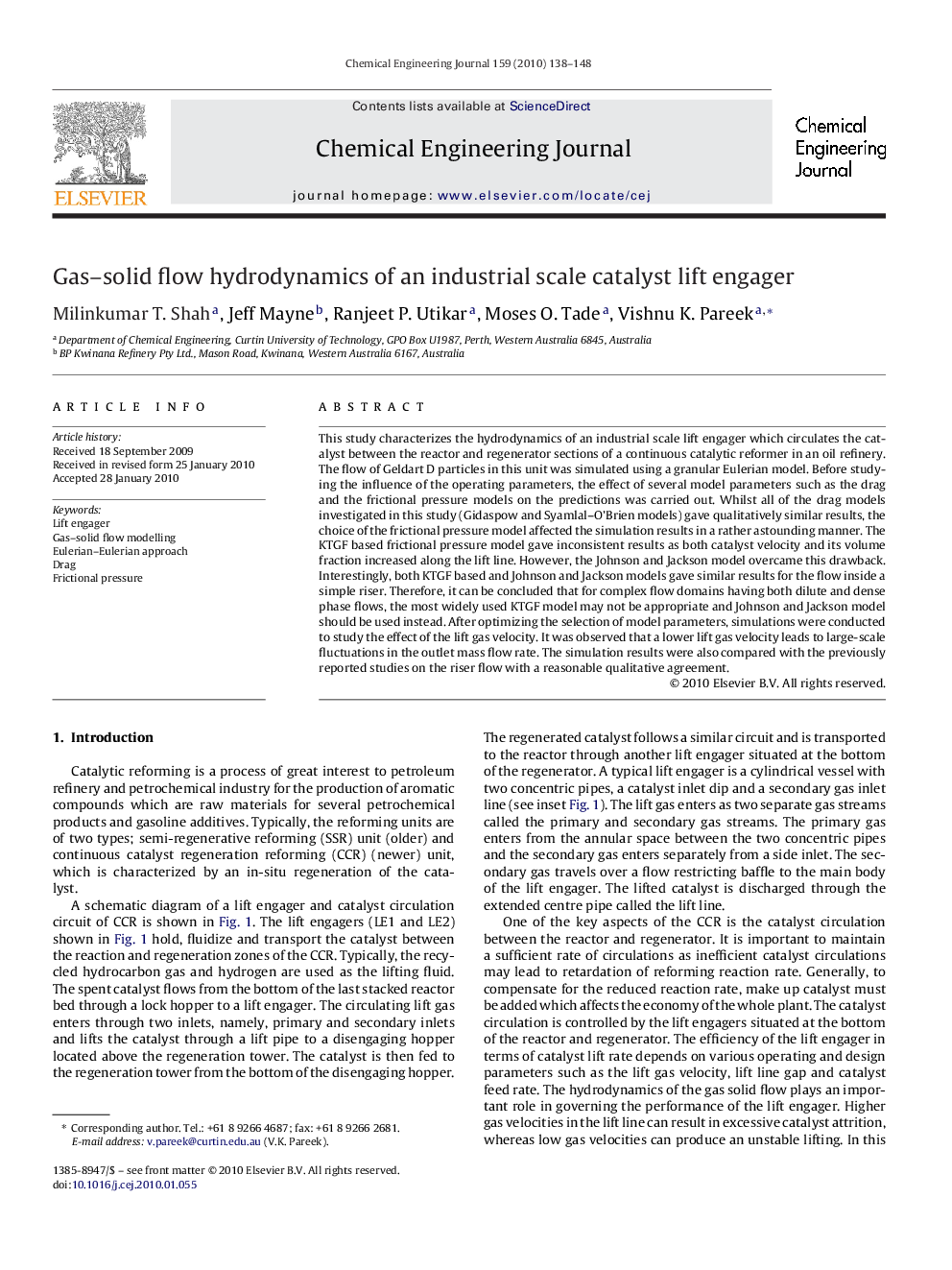| Article ID | Journal | Published Year | Pages | File Type |
|---|---|---|---|---|
| 152513 | Chemical Engineering Journal | 2010 | 11 Pages |
This study characterizes the hydrodynamics of an industrial scale lift engager which circulates the catalyst between the reactor and regenerator sections of a continuous catalytic reformer in an oil refinery. The flow of Geldart D particles in this unit was simulated using a granular Eulerian model. Before studying the influence of the operating parameters, the effect of several model parameters such as the drag and the frictional pressure models on the predictions was carried out. Whilst all of the drag models investigated in this study (Gidaspow and Syamlal–O’Brien models) gave qualitatively similar results, the choice of the frictional pressure model affected the simulation results in a rather astounding manner. The KTGF based frictional pressure model gave inconsistent results as both catalyst velocity and its volume fraction increased along the lift line. However, the Johnson and Jackson model overcame this drawback. Interestingly, both KTGF based and Johnson and Jackson models gave similar results for the flow inside a simple riser. Therefore, it can be concluded that for complex flow domains having both dilute and dense phase flows, the most widely used KTGF model may not be appropriate and Johnson and Jackson model should be used instead. After optimizing the selection of model parameters, simulations were conducted to study the effect of the lift gas velocity. It was observed that a lower lift gas velocity leads to large-scale fluctuations in the outlet mass flow rate. The simulation results were also compared with the previously reported studies on the riser flow with a reasonable qualitative agreement.
